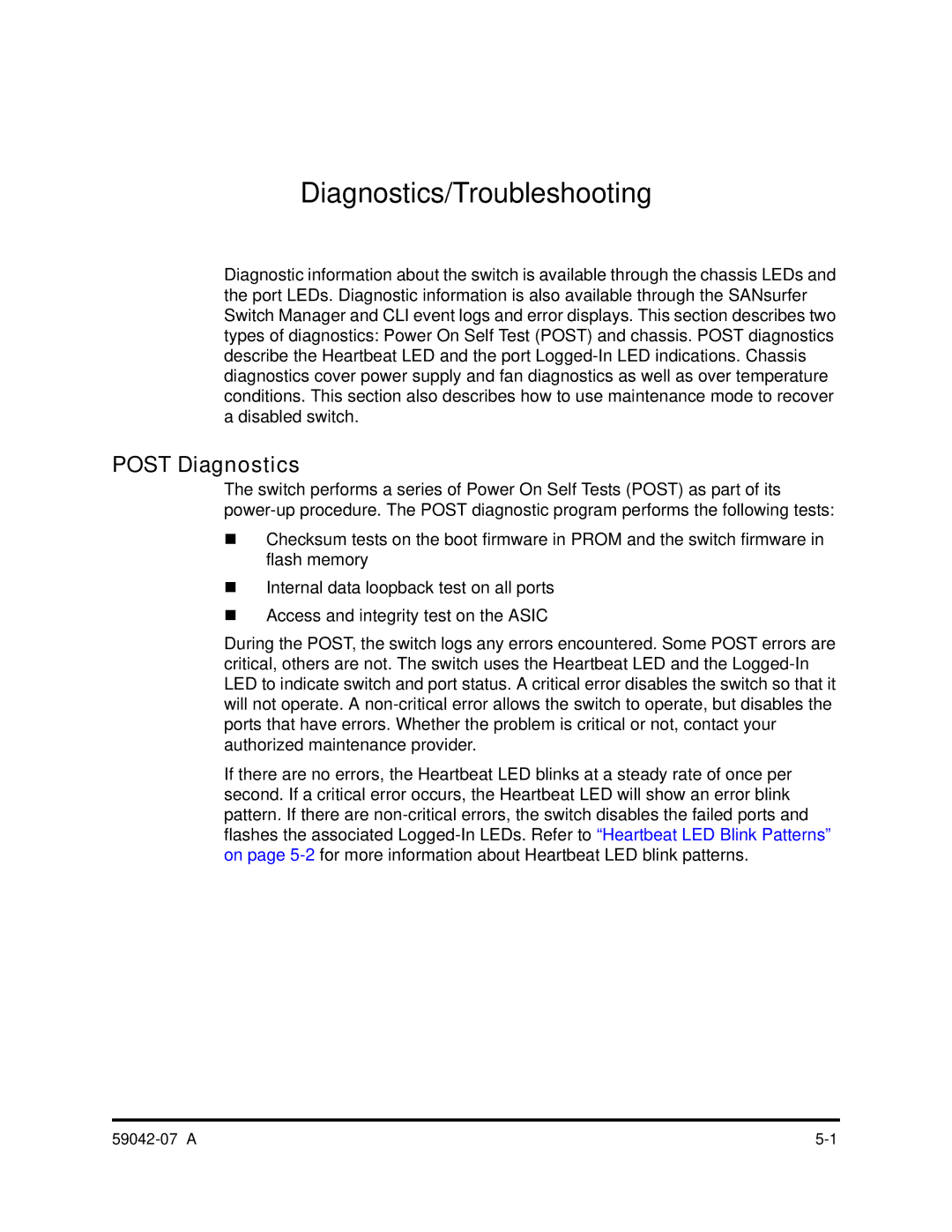Section 5
Diagnostics/Troubleshooting
Diagnostic information about the switch is available through the chassis LEDs and the port LEDs. Diagnostic information is also available through the SANsurfer Switch Manager and CLI event logs and error displays. This section describes two types of diagnostics: Power On Self Test (POST) and chassis. POST diagnostics describe the Heartbeat LED and the port
5.1
POST Diagnostics
The switch performs a series of Power On Self Tests (POST) as part of its
Checksum tests on the boot firmware in PROM and the switch firmware in flash memory
Internal data loopback test on all ports
Access and integrity test on the ASIC
During the POST, the switch logs any errors encountered. Some POST errors are critical, others are not. The switch uses the Heartbeat LED and the
If there are no errors, the Heartbeat LED blinks at a steady rate of once per second. If a critical error occurs, the Heartbeat LED will show an error blink pattern. If there are
